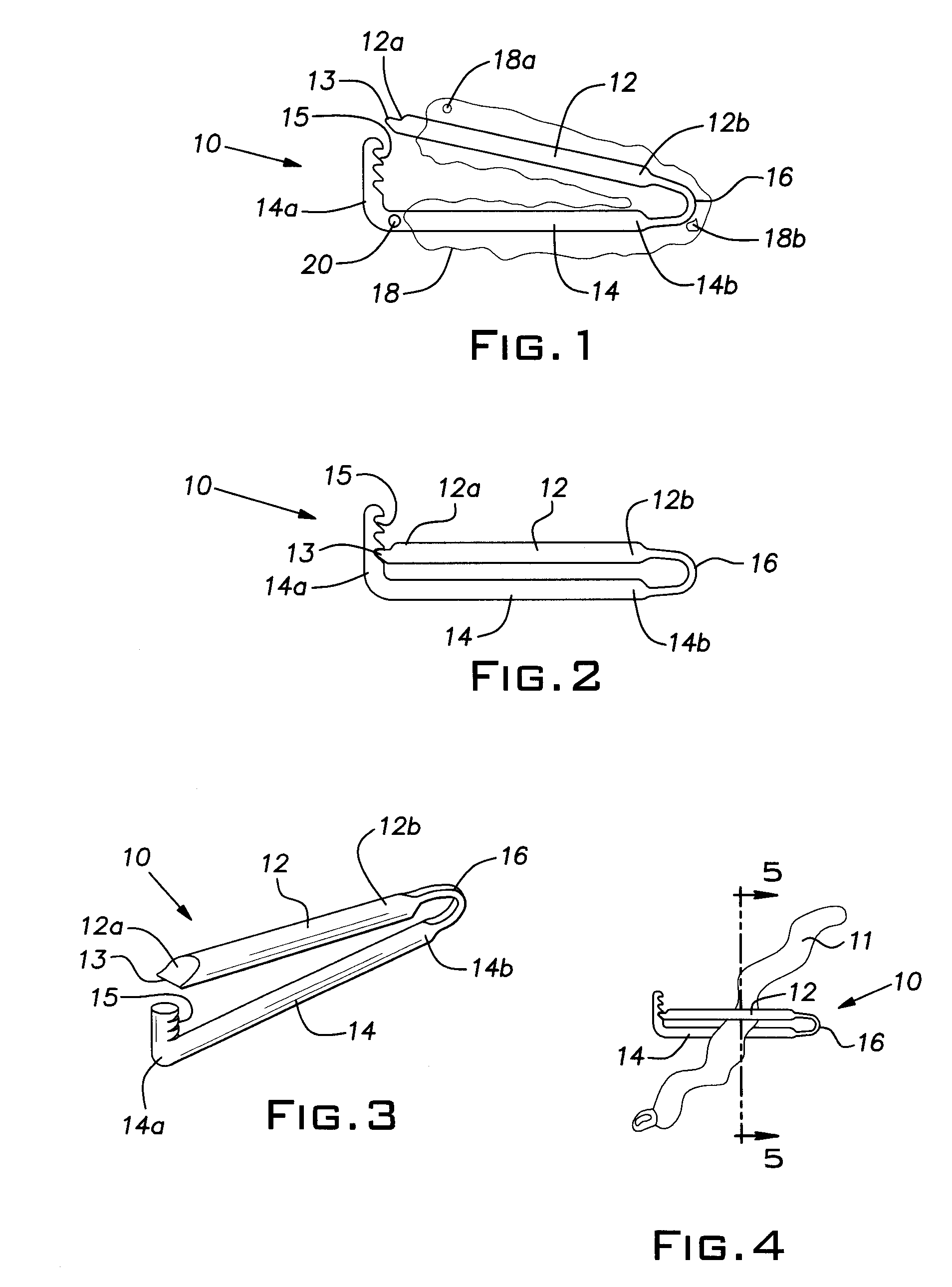Vascular and intestinal occlusion
a technology for occlusion and vascular lining, applied in wound clamping, medical science, surgery, etc., can solve the problems of increasing the clamping force to achieve the second objective, increasing the traction, and generally not being a suitable alternative, so as to avoid punctures and quick and easy occlude the conduit
- Summary
- Abstract
- Description
- Claims
- Application Information
AI Technical Summary
Benefits of technology
Problems solved by technology
Method used
Image
Examples
Embodiment Construction
[0027]Referring to FIGS. 1-7, a device according to the invention is indicated generally by the reference numeral 10. The device 10 is intended to occlude a conduit 11. Such occlusion usually will occur on a temporary basis while a surgical procedure, such as anastomosis, is being performed on the conduit 11.
[0028]The device 10 includes a first member 12 and a second member 14. The first member 12 has a first end 12a and a second end 12b that lie in a first plane. The second member 14 also has a first end 14a and a second end 14b that lie in a first plane. The first member 12 and second member 14 are adapted to extend from one side of the conduit 11 to the other side and to contact, respectively, the conduit 11 on opposing sides thereof.
[0029]The occlusion device 10 preferably includes a hinge 16 that connects the second ends 12b, 14b. Preferably, the hinge 16 is generally U-shaped and constitutes an integral extension of the second ends 12b, 14b of the first and second members 12, ...
PUM
 Login to View More
Login to View More Abstract
Description
Claims
Application Information
 Login to View More
Login to View More - R&D
- Intellectual Property
- Life Sciences
- Materials
- Tech Scout
- Unparalleled Data Quality
- Higher Quality Content
- 60% Fewer Hallucinations
Browse by: Latest US Patents, China's latest patents, Technical Efficacy Thesaurus, Application Domain, Technology Topic, Popular Technical Reports.
© 2025 PatSnap. All rights reserved.Legal|Privacy policy|Modern Slavery Act Transparency Statement|Sitemap|About US| Contact US: help@patsnap.com



